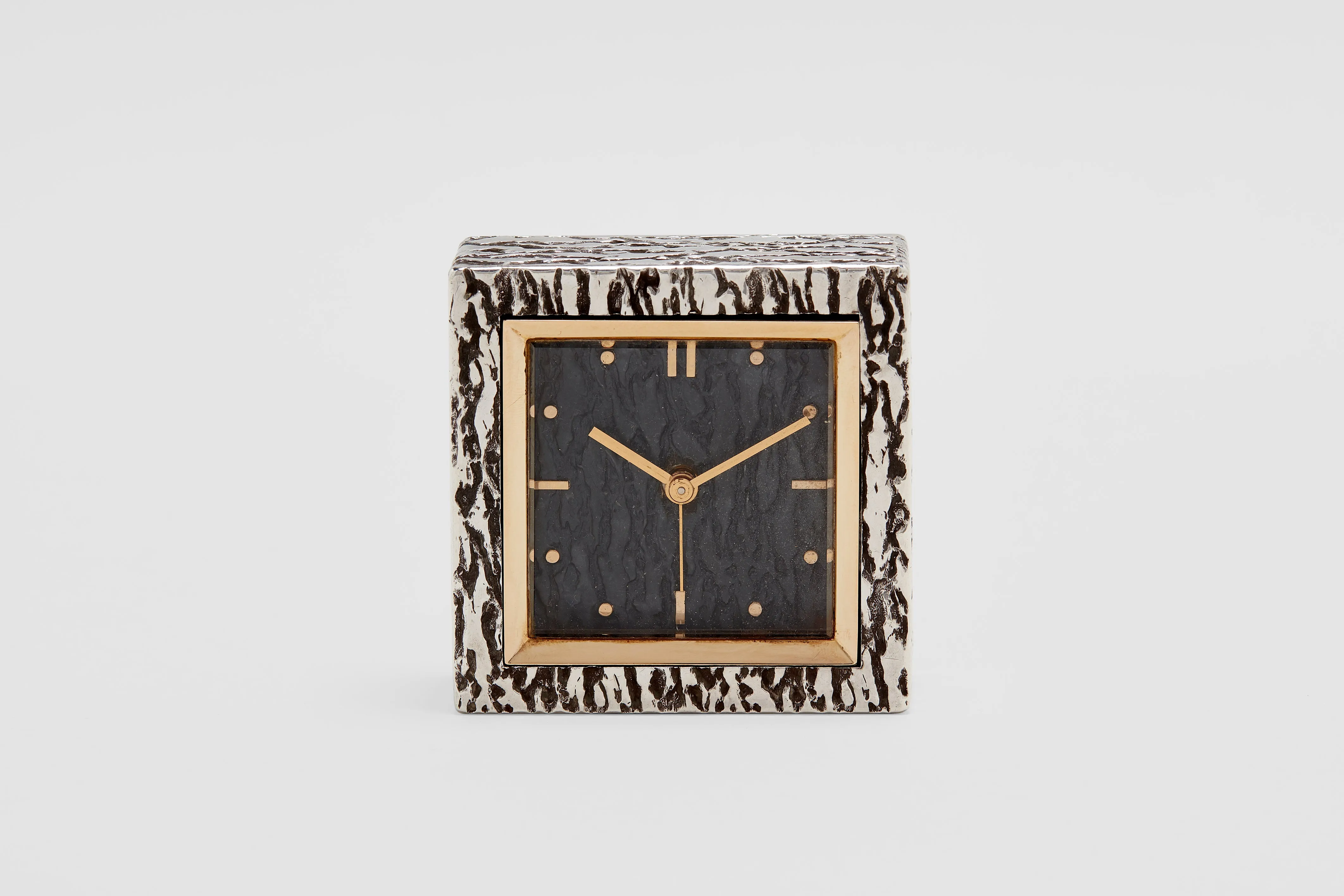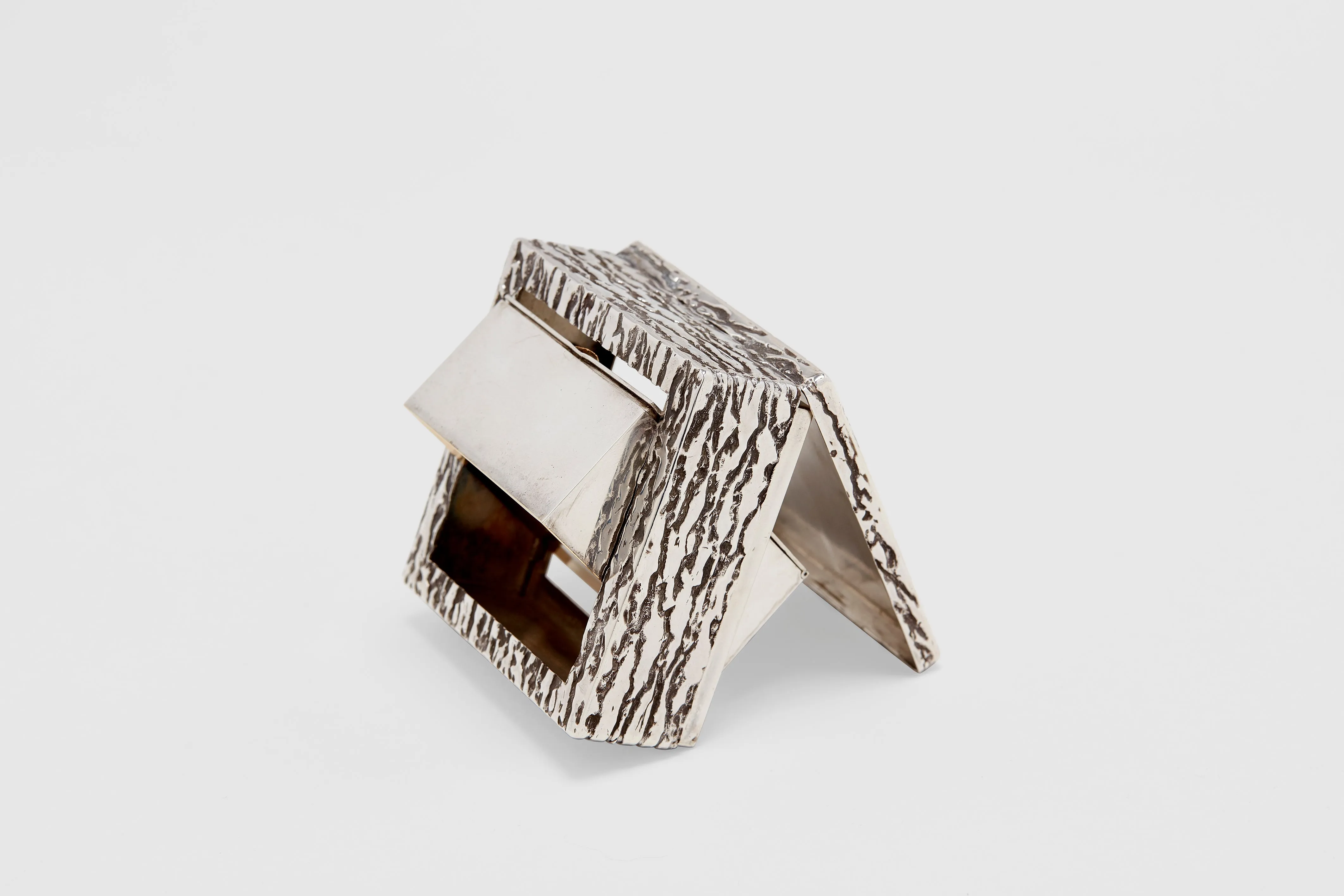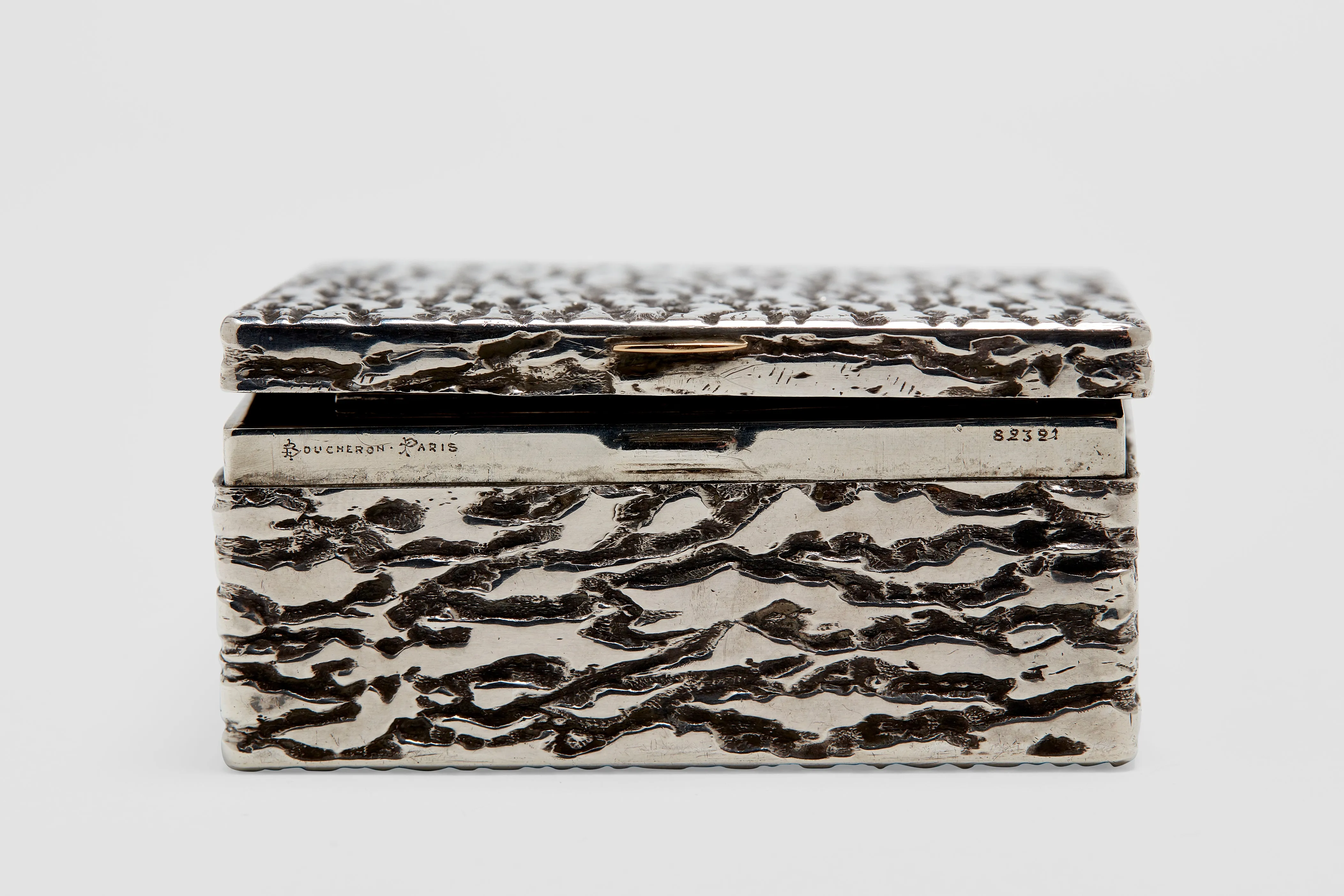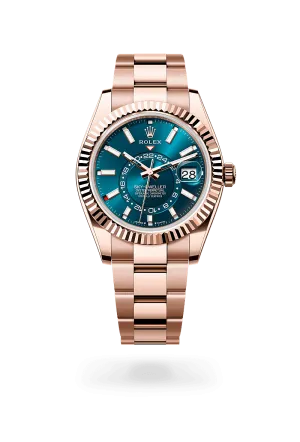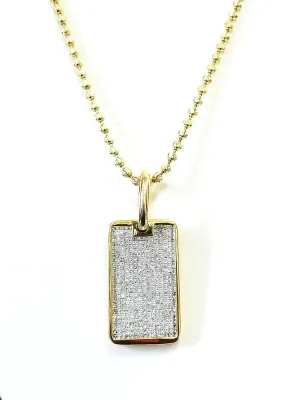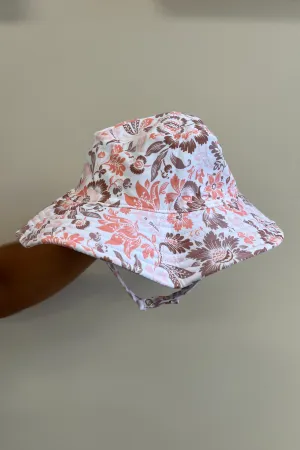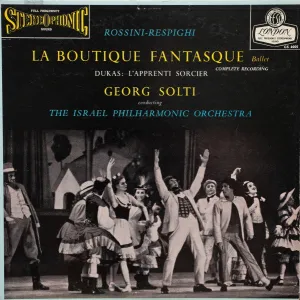An exceptional and very rare, sterling silver and eighteen carat gold mechanical travel alarm clock. This stunning piece of design, and workmanship was undertaken by one of the world's premiere, luxury jewellery houses of the 20th Century; Boucheron of Paris. Boucheron was formed in Paris by Frédéric Boucheron in 1858, making it the oldest jewellery Maison on the Place Vendôme, producing sumptuous creations for the world's royals, dignitaries, and celebrities alike.
This clock is a fine representation of the exceptional level of craftsmanship employed within the workshop of this legendary Maison. The case is cased in a bark-like sterling silver and framed in eighteen carat gold. The dial itself is also a similarly detailed piece of this technique, but fully oxidised to a stunning deep slate grey colour. Applied to the top area series of solid eighteen carat yellow gold baton and round style markers. The 12 o'clock marker being a double baton in order to know which was is 'up' once the clock is placed on a surface. There is also an additional small gold lip at the top of the case in order to assist with orientation.
The technique used to make both the dial and the case is very unusual, especially from this period. It resembles the Russian 'Samorodok' technique popular in the nineteenth Century. Samorodok is a technique that produces a beautifully textured nugget like effect on the surface, that resembles tree bark. It is achieved by heating the silver to a temperature just below melting point, then cooling it abruptly in water. It is a very difficult technique to master, and even at the height of its desirability was only able to be reproached by the most skilled silversmiths. Most examples found are of Russian origin, the most notable by Carl Faberge.
Perhaps one of the most interesting details of the clock is the way in which the case is designed. It is made as a true travel clock, and as such folds inside to prevent the glass and dial side being exposed once on the move. This is done via a process of hinging and revolving (as can be seen in the second picture). Once done then the clock looks more like a small box.
The clock is powered by a Lemania movement, and is marked as such, along with a movement number of 204***. There is also an additional hand on the dial, which is to set the tie for the alarm. All this is done, winding, setting through a singular crown and stem that is also beautifully hinged and hidden at the bottom of the case once pivoted on its hinge.
The case has a number of French control marks on various parts of the case for both gold and silver, along with a hand engraved Boucheron Paris signature, along with the unique in-house production serial number. (Boucheron have been contacted for any additional information). The clock is in superb condition throughout, and the movement is working well. Made in France, circa 1950's.

